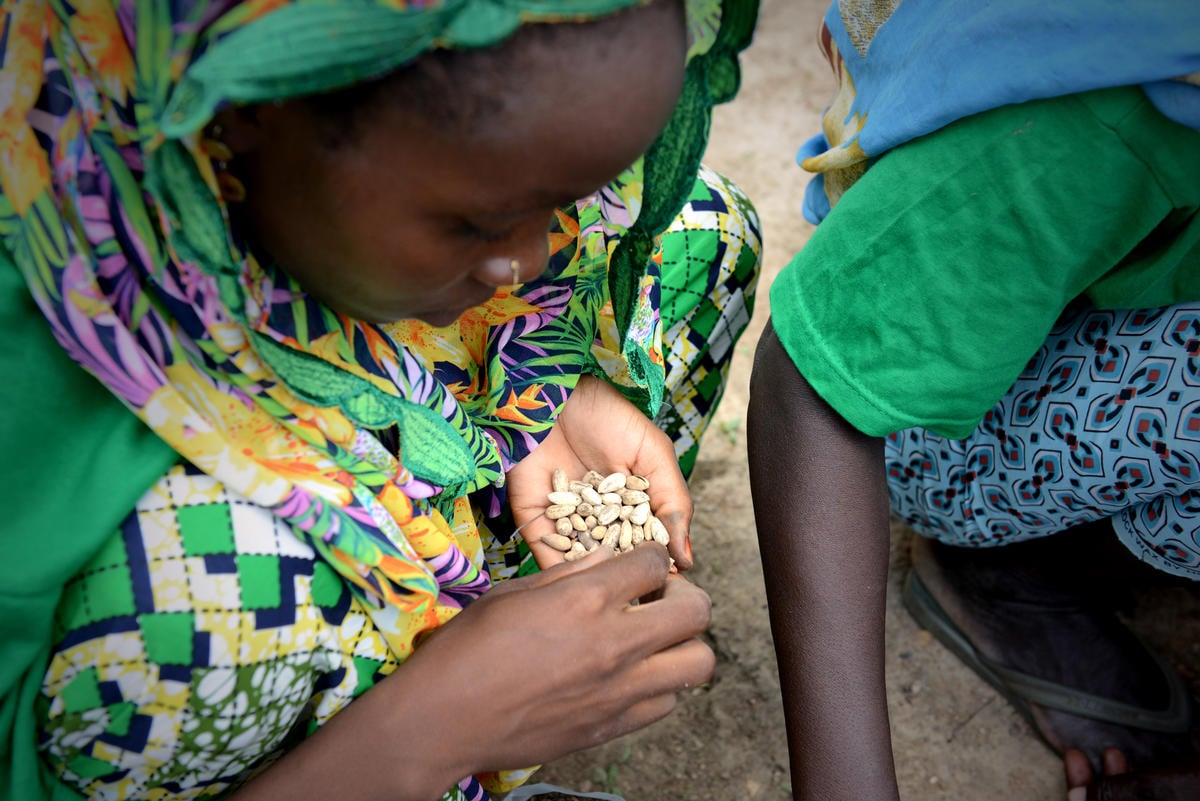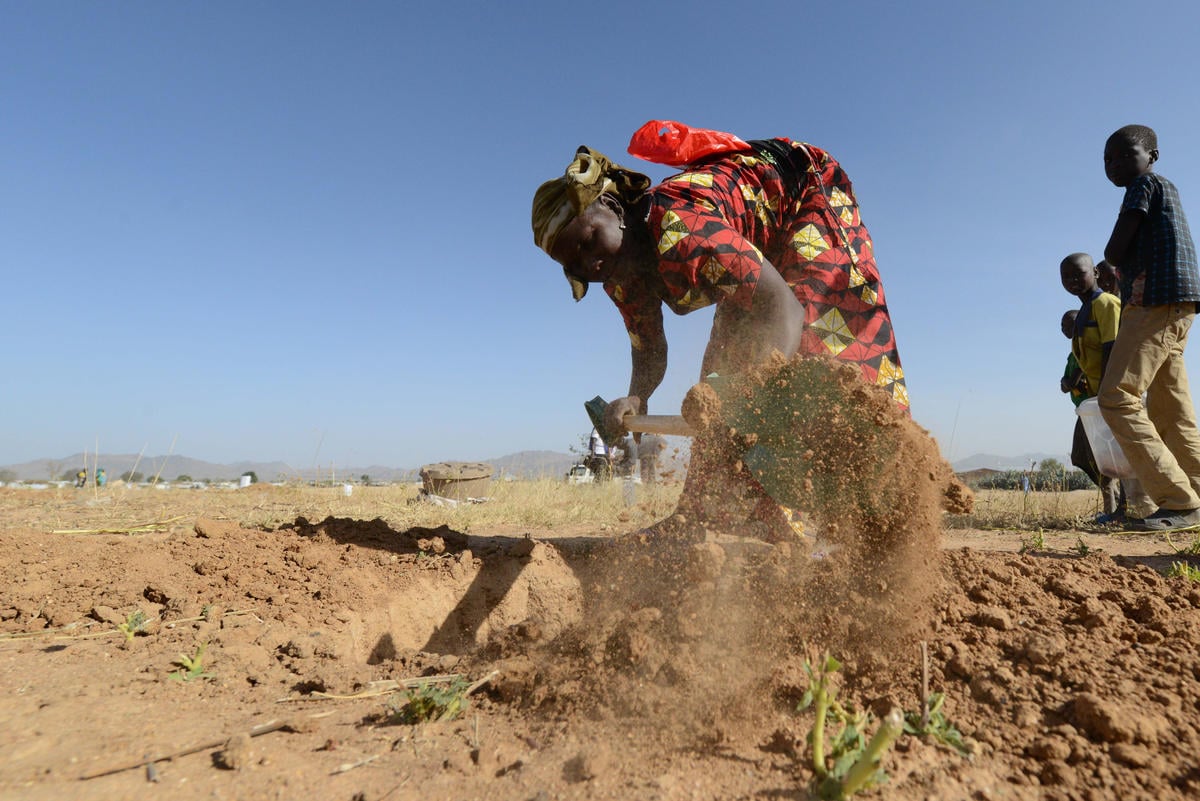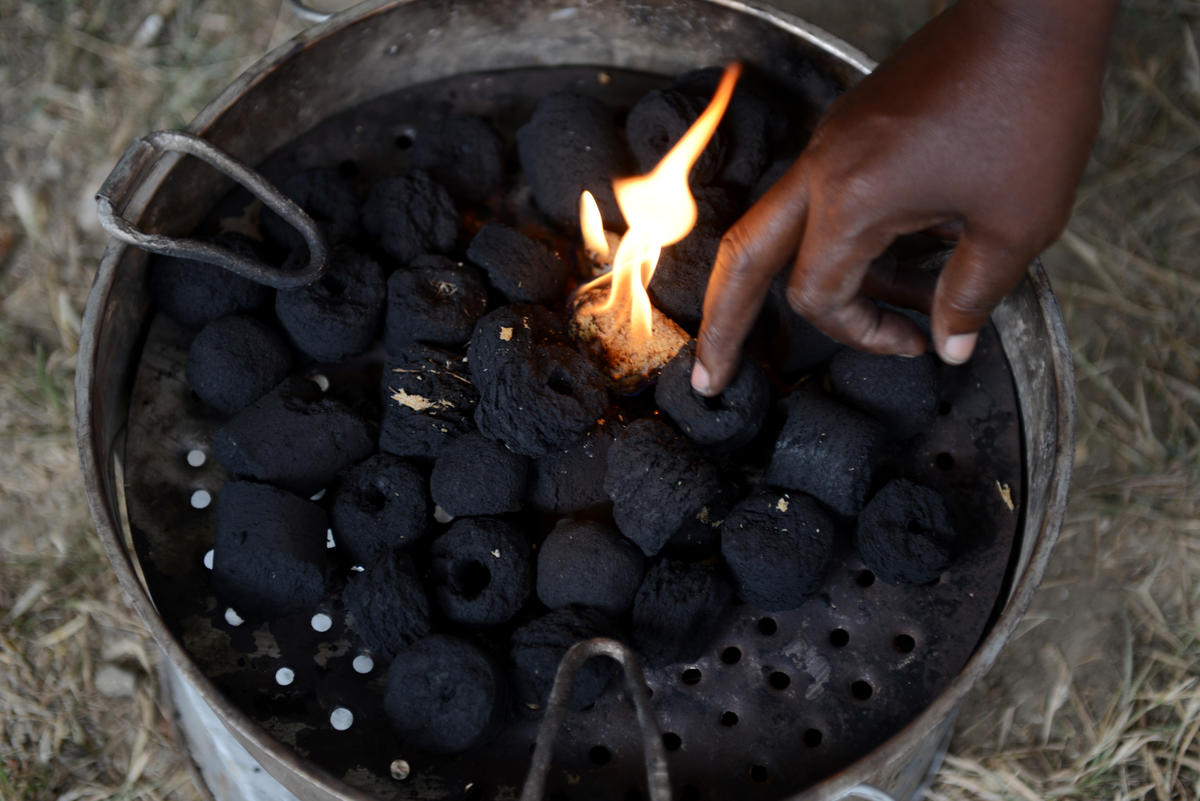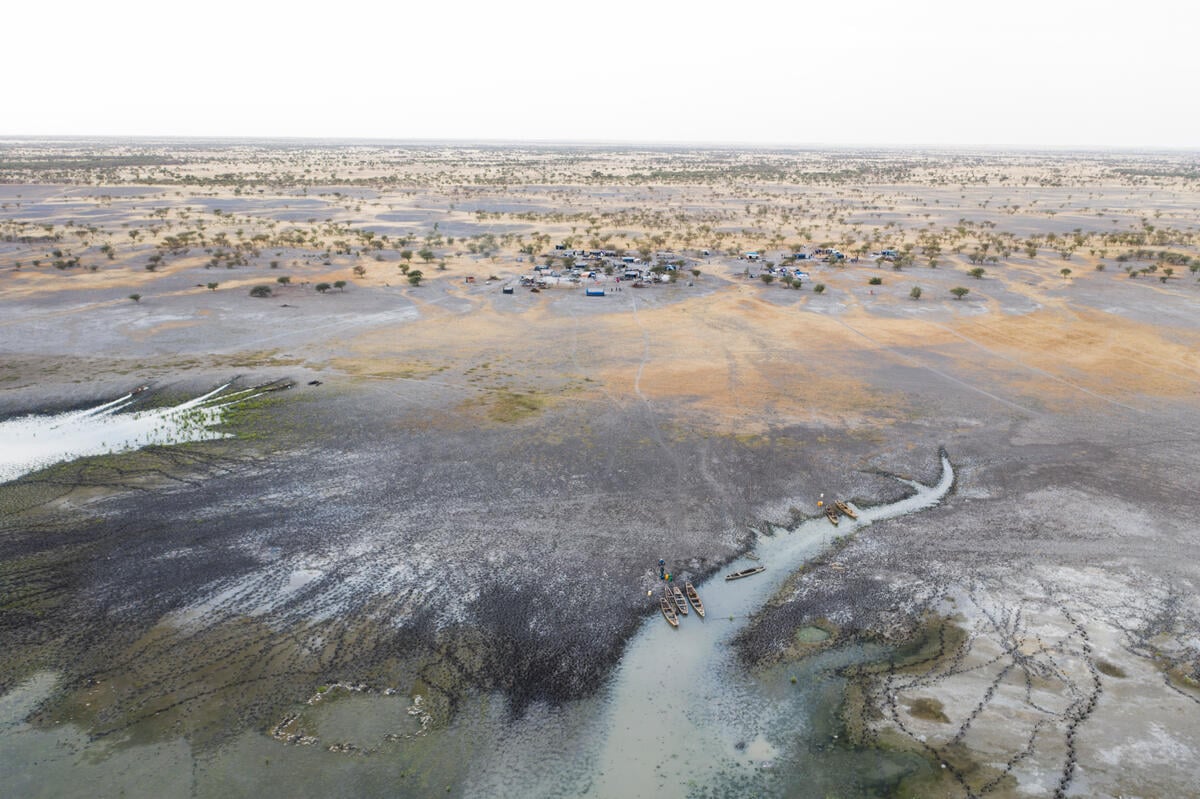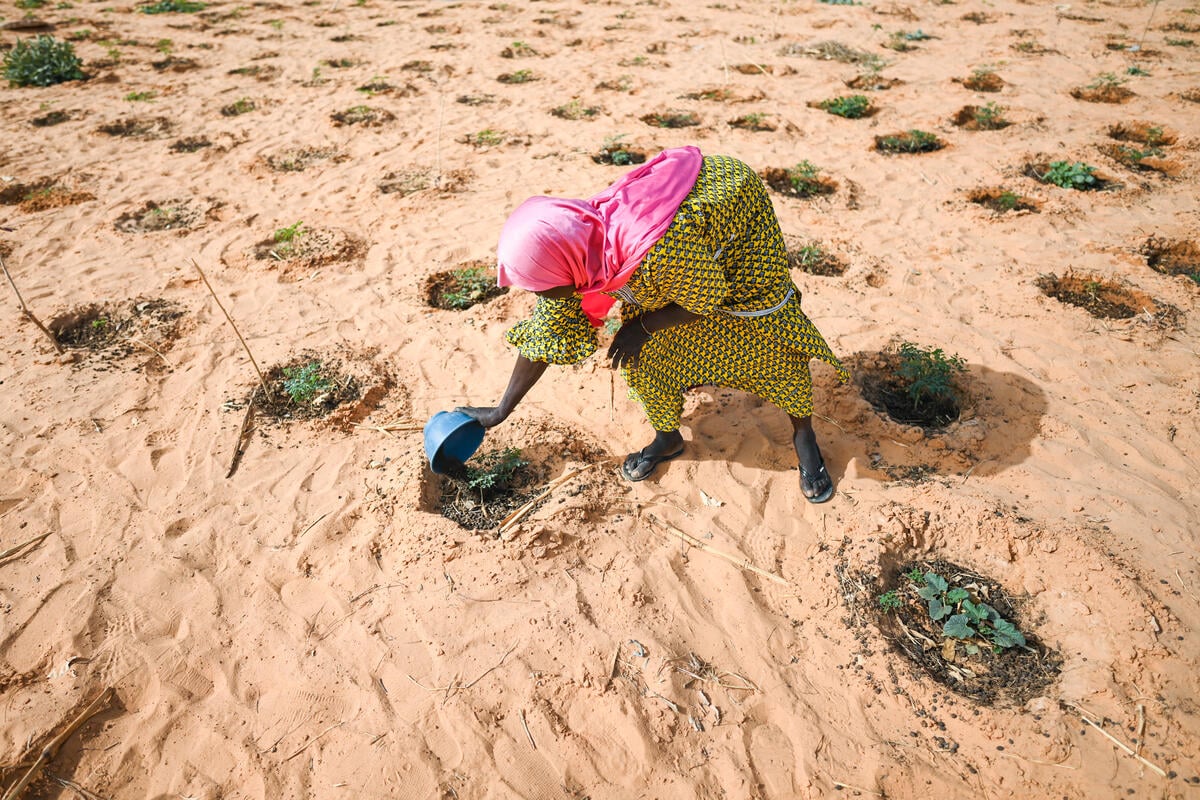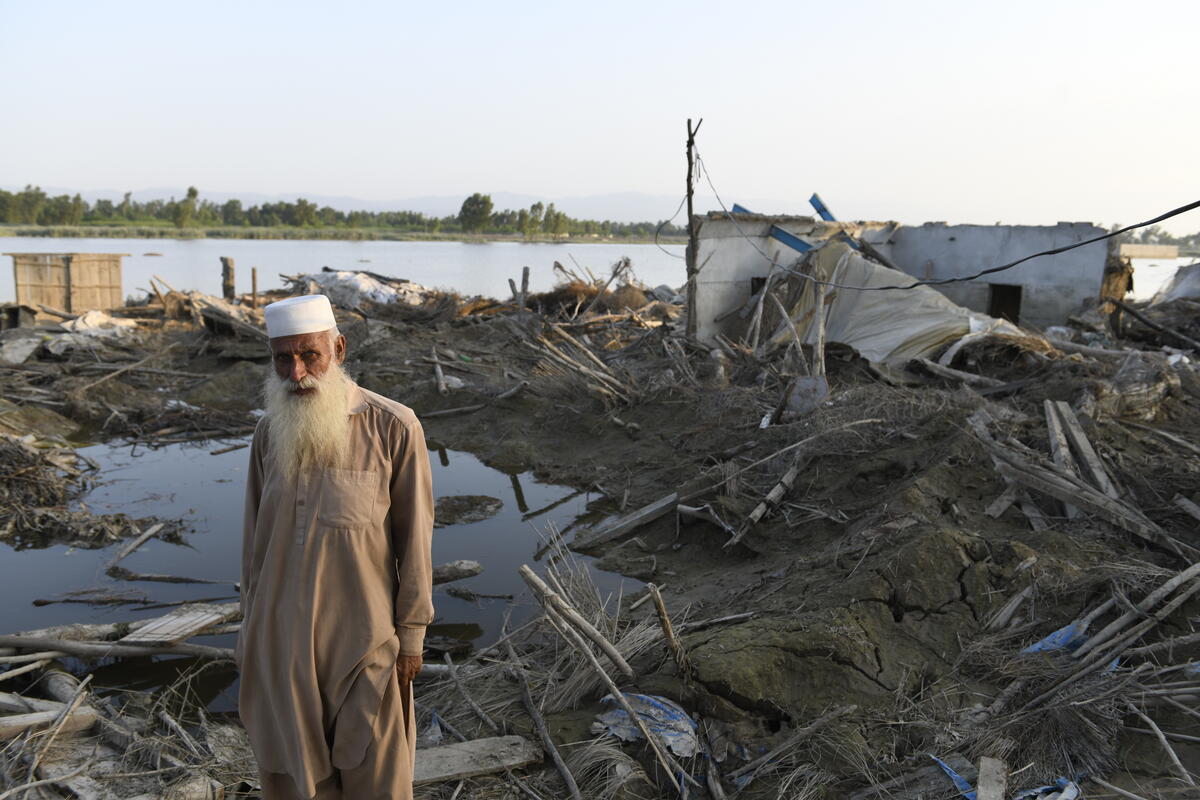Cameroon: Around Minawao refugee camp, you can't see the forest for the trees
Cameroon: Around Minawao refugee camp, you can't see the forest for the trees

In Cameroon’s Extreme North region, the arrival of tens of thousands of Nigerian refugees has had an impact on an already fragile environment. In one of the country’s poorest regions what little woodland area there is surrounding Minawao refugee camp has been used to provide for the needs of those fleeing violence, which in turn, has accelerated the desertification.
UNHCR, the UN Refugee Agency, and its partners, the Land Life Company and the Lutheran World Federation, have launched an innovative reforestation project and are searching for durable solutions to address the overexploitation of the forest for firewood.
“Do you see all around you? It used to be a forest”, says Job Ngaroit pointing to the hectares of plains that surround him. Job is a project manager at the Lutheran World Federation (LWF) who coordinates an unprecedented reforestation project with UNHCR, the UN refugee agency. At his feet, thousands of small plastic bags full of clay are arranged on the ground: each contains a sapling that has just emerged from the soil, which is fed by a small stream of water that trickles below.
By the end of the short-lived dry season, Cameroon’s Mayo Tsanaga department, which is located in the country’s Far North region, is more beautiful than ever. Terracotta huts form numerous small villages, and all around, verdant hills overlook the plains. It is here that the cows graze, and that millet, sorghum and groundnut grow silently.
It is hard to believe that such a peaceful picture is the setting for one of the continent’s biggest refugee crises. From the departmental capital of Mokolo, it takes only one hour to travel to Minawao camp, where more than 58,000 refugees who fled neighbouring Nigeria are settled and have found shelter.
A land of hospitality, vanishing
Nigerians fleeing Boko Haram began to arrive in May 2013, in a landscape that is now unrecognisable owing to the disappearance of many of its forests and “mayos” (rivers and streams). Key among the causes of this transformation is the rise in temperature brought about by climate change.
In a region that suffers from desertification, “the arrival of the refugees has had a huge impact on the environment in the immediate area surrounding Minawao, and has put a lot of pressure on the availability of natural resources” says Job. “This land used to be a forest reserve, but the refugees have had to cut a lot of the trees for firewood, which has generated tensions with local populations”. In the context of the reforestation project over the next two years, it is projected that almost 200,000 trees will be planted around the site of Minawao and in those neighbouring villages that suffer most from the impact of desertification.
Crouched on the floor, a dozen volunteers tend to young acacias, moringas, neem trees and Leucaenas. These plants have been chosen to fit the context and the needs that have arisen. Some provide food for the population and for cattle, others can be used as firewood, while others still have medicinal properties.
Protecting humans and nature.
“These plants have numerous properties, especially the Leucaena, the roots of which compress the soil and prevent erosion. Its leaves also provide many valuable nutrients to the soil when they decompose”, emphasizes Job, who sees in this project more than a simple environmental operation: “this is an approach that will pacify tensions and serve to avoid some of the violence perpetrated against refugees living here. As the forest recedes, women have to travel further and further to find wood, alone, and are often exposed to assault.
The over exploitation of wood, as well as the risks taken by women during their long walks in the forest are a huge concern for Job, who is trying to find solutions. It is with a certain amount of pride that he reveals one of the ways he has found to address the problem: a small black brick called a briquette which has the appearance of charcoal. This biological combustible is produced from natural waste ranging from groundnut shells to dry grass or plants, and had the potential of drastically changing the life of Minawao’s women for the better. Briquettes are non-polluting, slow-burning and emit very little smoke, especially when they are used in eco-friendly stoves such as those provided by UNHCR.
For the time being, the product is being test-produced: a group of about fifty refugees are trying their hand at making enough to create a small business and to generalize its use.
“You need to understand the potential of these briquettes: they represent more security, reduced wood chopping, gained physical energy, better cooked food, and in the future, they will even be a source of income for some of the refugees. – Try this!” says Job with enthusiasm, blowing on a freshly cooked “test” potato.
Refugees contributing to local development.
Of course, those initiative don’t only benefit refugees. Many of the villages surrounding the camp as well as hosting communities also stand to gain from the construction of schools, maternity wards, health centres, bore holes, water and sanitation infrastructure and reforestation.
“More and more, we take the opportunity to create sustainable structures to benefit the host communities, even after the refugees have returned home. When the situation in their country of origin becomes favourable, many will return voluntarily and with dignity, leaving behind a more developed village,” says Mamady Fatta Kourouma, Chief of UNHCR’s office in Maroua, adding “our role is also to assist this generous and welcoming population”.
To see this, one only needs to go to Gawar, a village located next to the refugee site. This is the home of His Majesty Ousmane Oumar, Chief of the Gawar canton, which hosts the Nigerian refugees. As they approach his house, the reforestation teams can already hear the sound of traditional drums and women ululating. Standing between two armed guards dressed in long coloured tunics, His Majesty awaits his visitors.
Behind his house, is yet another recently installed plant nursery, at which the patriarch looks with satisfaction: “Before the establishment of Minawao camp, I was consulted. I said: if these people want to come and live in peace with us, why should we refuse? Since they have settled, we have lived in harmony, even if the environment has been destroyed. But with the reforestation programme, many things will change”, says the old man in Foulfoulbé.
By the end of the afternoon, the volunteers – both refugees and local villagers – leave the nurseries, as rain drops start to fall. These are the last of the season. Soon, despite the climate becoming harsher, the forest will grow and hopefully return to its former splendour, thanks to a new technology used by UNHCR’s partner, the Land Life Company, which makes use of biological cocoons, with a view to breathing green life back into in Minawao and the region at large…
(translated & edited by Ulysses Grant)



